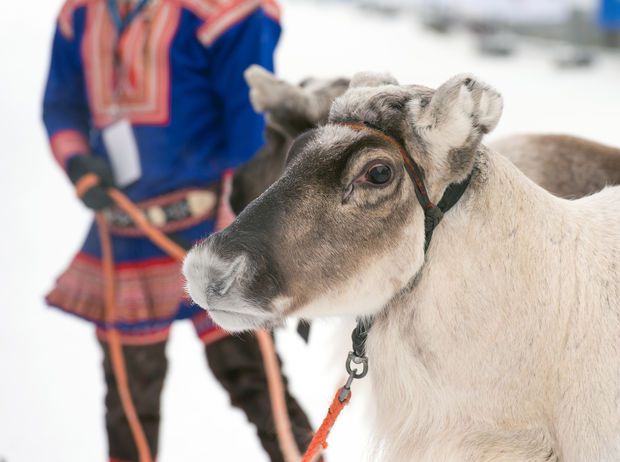The Sámi people are a geopolitical anomaly. Their past dates back to prehistory and their ancestral grounds defy borders as they inhabit one of the world’s most inhospitable regions. The Sámi’s homelands cover Lapland’s wintery expanses, and extend across northern Norway, Sweden and Finland, reaching as far as Russia’s Kola Peninsula. Fiercely proud of their rich traditions, the Sámi people have worked hard to ensure that they and their unique cuisine lives on today, as it has persevered for millennia.
History
While their origins can be traced as far back as 10,000 BC, it wasn’t until much later that the Sámi became a distinct people. The first written record of their existence dates to a 9th century court visit in England, when the Norwegian chief described an indigenous group that managed vast herds of reindeer.
Indeed, while the Norwegians inhabited the south – complete with fjord fishing spots and arable land – the Sámi were left with the north’s raking icefields and frozen lakes. This separation was key to the Sámi’s development. As trade routes connected the rest of the country to Europe’s riches, the Sámi were left to form a self-reliant community.

The Sámi practice of reindeer herding stretches back many thousands of years
Culture
And each part of the Sámi way of life is heavily informed by this removal. Traditionally their itinerancy has tracked the seasonal reindeer migration, relying on these majestic beasts for everything from clothing to food. To this day their meat forms hearty stews and their thick hides are still used in leatherwork, dyed in bright blues and reds. Termed a gákti, the traditional dress is ideal for warding off the bitter cold and for being spotted in the wintery expanses.
Their semi-nomadic lifestyle has also given rise to their instantly recognisable accommodation – the lavvu. Designed to be quickly erected and dismantled in high winds, it’s squatter than its spiritual relative, the tipi, but bears the same conical hallmarks.

Traditional lavvu tents located near Kirkenes in Northern Norway
However, one factor in the Sámi’s spread remains more sociological than geographic. Historically, they’ve been met by discrimination; they’ve seen their land colonised and inheritance claims dismissed. Even the adjective ‘Lappish’ has become something of a slur, having associations with the Swedish word for rags, lapp.
Travel
Today, you’ll find the Sámi more settled. Finland, Sweden and Norway each have their own parliament with the latter a particular highlight. Karasjok – set right over the country’s northern curve – is home to 3,000 Sámi and some 60,000 reindeer. Its lavvu-shaped parliament building borrows from ultra-modern Scandinavian design sensibilities while the superb Sápmi Culture Park is a real highlight. Here, you’ll be able to interact with the people themselves and sample some of their traditional cuisine, cooked on an open fire. If you’d rather get even closer, consider a night in a traditional camp.
And, thanks to all-natural light sources and husky trips, it’s also an excellent opportunity to spot the Northern Lights. For something a bit different, Sweden’s famous ICEHOTEL and Treehotel, offer a range of Sámi experiences. Between them, you can drive your own reindeer sled, take part in a wilderness survival course and return to moreish souvas – smoked reindeer meat served with unleavened bread and lingonberries.

Sweden's famous ICEHOTEL allows its guests to experience traditional Sámi experiences including reindeer sledding


